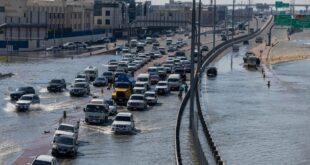'It was hard to think that I might have contributed to that smoke in the sky': tree planter

When Claire Cameron planted black spruce trees in the 1990s, she thought she was saving the planet.
But as wildfires ravaged parts of Canada this past summer, she wonders how many of those saplings contributed to the smoke in the sky.
"I'd recently read a book by John Vaillant named Fire Weather and in it, it talks about how flammable black spruce are," said the novellist and essayist.
"I had this moment where I could picture myself with my hand on a black spruce, flicking the roots of the sapling in and planting it, and I realized that this was more sort of like a blowtorch," she told The Current guest host Nora Young.
Canada has lost more trees to wildfires this year than in any other year on record. More than 17 million hectares have gone up in smoke across the country this year — more than two times the previous record of 7.6 million hectares in 1989.

Nearly 6,500 wildfires have burned across Canada in 2023, from the northern tips of the territories to the heavily-forested areas of British Columbia.
"With climate change, we're seeing so much drought and the heat, but a lot of trees … just don't survive," said Meghan DeGraff, a supervisor for All Star Silviculture in Enderby, B.C.
"So you're having to go back year after year and keep planting the same areas over and over," the veteran tree planter said.
Ontario alone has had to deal with 725 wildfires this year. Although she can't tie her actions directly to today's fires, Cameron knows a few wildfires burned in places near Hearst, Ont., where she used to plant.
"I had such a close relationship with each black spruce there," she said. "I was alone all day, so I talked to them and I thought about each one."
"I was quite proud of that, so it was hard to think that I might have contributed to that smoke in the sky."
Smart tree planting
As a tree planter, Cameron said she was on a contract where she exclusively planted black spruce trees.
She said she would work 11-hour shifts, six days a week, and she would plant close to 4,000 trees a day at her peak.
"Going into tree planting, I certainly thought, you know, you take one tree out, you put one tree in," she said. "Since then, my reading and realization is that it's so much more about a forest."
"It's a very complicated ecosystem and an organism almost, and not something you can just readily replace by putting one young tree in."

John Innes, the Forest Renewal B.C. chair in forest management, lays some of the blame on timber production. He said a lot of tree planting is done with the goal of achieving a grand, fully stocked stand of trees that are useful for the forest industry.
"Unfortunately, that is absolutely what fires love," said the University of British Columbia professor. "So the fires have been ripping through these stands and we've got a serious problem as a result."
Innes said more strategic planting of mixed vegetation is needed in order to prevent serious wildfires from spreading, such as working broad-leaved trees like birch into the mix.
"Broad leaves are of very little interest to the forest industry, but they don't burn so severely as conifers, and so they are very valuable as fuel reduction breaks in the landscape," he said.
DeGraff, who has been planting trees for 13 years, said she's noticed a shift in parts of B.C., away from planting a single species of trees.
"We are starting to move in a direction where we are planting more species," she said. "Even this last season, I remember days where I was planting five, six different species in the same day or the same contract, which is fantastic."
DeGraff said they're also transitioning away from planting a large amount of trees in a small area. According to Innes, by making the forests less dense, it's less likely for wildfires to spread through the crowds.
"We tend to do a lot of these sorts of things in what's known as the wildland–urban interface, which is the area immediately around [towns]," he said. "We're trying to protect towns. We don't do it across the whole of the landscape because it's very expensive."
"But if we were to start off with the clever planting of the right species in the right place, we could actually then work with fire to make our landscapes more resilient."
When you're enveloped in smoke, it kind of concentrates your mind, and I think we will see some changes occurring.
-John Innes, the Forest Renewal B.C. chair in forest management
Cameron said she's encouraged by what she's hearing from DeGraff because it's these structural changes that will make a difference.
"I think, perhaps, what we're both getting at is removing this idea that just planting a tree is inherently good," she said. "I think we'd both question that, it has to be done in partnership with the local community, it has to be done taking the landscape into consideration."
That's not to say that people should stop planting trees, though.
"I don't think it's something we can stop," she said. "We can't afford to put down tools just because we're up against something hard."
"We need changes on the structural level and we need to be having conversations about how to do this sustainably — and at the same time, we need to address our consumption as well."
Innes said he wasn't initially hopeful of these changes being made. But he believes this fire season has been a "wake up call" for politicians and forest managers.
"I think a lot of politicians and farm managers … [are] realizing that there is a serious problem," he said. "When you're enveloped in smoke, it kind of concentrates your mind, and I think we will see some changes occurring."

Add some “good” to your morning and evening.
A variety of newsletters you'll love, delivered straight to you.
*****
Credit belongs to : www.cbc.ca
 MaharlikaNews | Canada Leading Online Filipino Newspaper Portal The No. 1 most engaged information website for Filipino – Canadian in Canada. MaharlikaNews.com received almost a quarter a million visitors in 2020.
MaharlikaNews | Canada Leading Online Filipino Newspaper Portal The No. 1 most engaged information website for Filipino – Canadian in Canada. MaharlikaNews.com received almost a quarter a million visitors in 2020.







